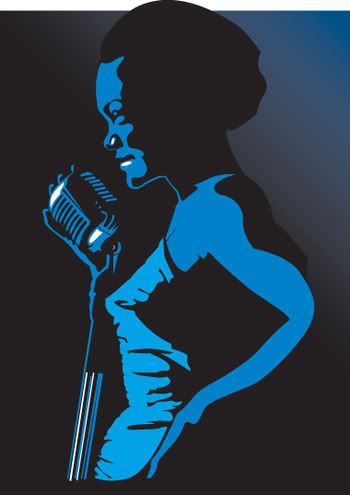
I would like to share a story that has nothing to do with music, before I dive in. The weekend post is even later than usual, because I was not home all day yesterday. I went to New York City to shop for a Christmas present for my wife. Soon after I emerged from Penn Station, I saw a party of three Santas with there beards askew, evidently on their way to get something to eat or drink. Native New Yorkers or those who frequent the city at this time of year may already know where this is going. If so, please don’t spoil it for everyone else. Soon after, I saw two young ladies, dressed as a Christmas present and a Reindeer. I thought this was a little strange, but I thought it was nice that people were getting into the holiday spirit. Then, I took the subway to Greenwich Village. The doors opened at my station, and the car two down from me disgorged at least twenty Santas. They promptly joined in a rousing chorus of Santa Claus is Coming to Town. That seemed like a lot of Santas, until I got out of the station. It was Santas everywhere! There were a good number of Santa Claudias, more reindeer, elves, more presents, at least one person dressed as a Christmas tree and another as a wreath, and Santas, Santas, Santas. I finally found out that there was a Santa Claus convention in town, (I’m not making this up!). So that was the most surreal visit to NYC I’ve ever had.
And now back to our irregularly scheduled post. My title is Building a Jazz Song. How is it done? You start, of course, with the voice. Depending on the singer, one builds from there accordingly. In my previous looks at jazz singing, I have presented some wonderfully creative arrangements with unexpected combinations of instruments. But the traditional setting for jazz singing is just drums, stand-up bass, and piano, with a guitar sometimes added to the mix. Does this limit the singer and the band creatively? It doesn’t have to. Let’s have a look.
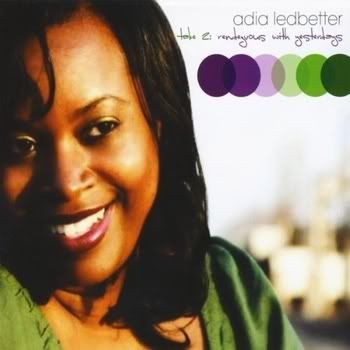
Adia Ledbetter: Beautiful Love
[purchase]
Adia Ledbetter starts us off perfectly. On Beautiful Love, she starts the song alone, just her voice. The drummer enters with minimal support, little more than a soft pulse, played with brushes. After the first chorus, the full band appears, but they soon disappear, leaving Ledbetter alone again. Next, the bass joins her, a bit more supportive than the drums were earlier. And so it goes. The song starts with Ledbetter lonely, but in an emotional terrain she knows. Love comes in, and everything becomes strange and somewhat frightening. After going back and forth with herself, Ledbetter finally embraces the possibilities of a new love, and the band supports her fully as the song ends. The arrangement beautifully captures her emotional back and forth, but the whole thing falls apart unless Ledbetter’s vocal can make it work. She does a beautiful job of conveying all of these subtle shades of emotion in the space of a short song. Elsewhere on the album, the subtle emotionality continues, but the arrangements are more traditional. The songs are mostly standards, but they are not the best known, with exception of These Foolish Things. Regardless, I didn’t mind hearing them again with Ledbetter singing them.
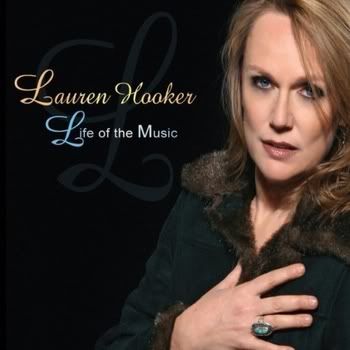
Lauren Hooker: I Am Doing Very Well
[purchase]
I Am Doing Very Well sounds like a standard, but is actually a Lauren Hooker original. To our basic band of drums, bass, and piano, Hooker adds a flugelhorn here, which is like adding a second voice. This is one of those songs about a woman who is trying to convince herself that she is alright without a recently lost lover. Listen to the way Hooker sings the word “except”. Another singer might stretch out the note, trying to wring every ounce of feeling out of it, and oversinging instead. Not Hooker. She clips that “except” short, and that says everything. It comes off like a sob caught in her throat, and the whole song works because of it.
Elsewhere on the album, Hooker uses fuller arrangements than most of those in this post. In particular, her use of a cello in Song to a Seagull is a beautiful touch. Hooker can get different shades of emotion by making use of her wide range, but that would mean nothing without the talent and judgment to know what each song needs. Similarly, the diversity of arrangements found on this album is impressive, but never just for show. Hooker knows what each song needs, and she delivers.
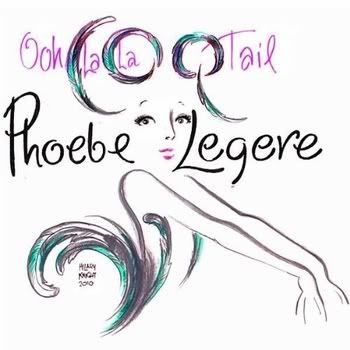
Phoebe Legere: Prelude to a Kiss
[purchase]
Phoebe Legere also adds to our basic band, this time with a trumpet and violin. The drums are barely there, just keeping time for the rest of the band. Legere is after a French cabaret vibe here, and her vocal style is essential to that. She sings in a voice full of breath, adding emotion by sliding into a more full voice. This is a style that can sound corny and clichéd, and can make a singer really look bad. But not Legere; she shows how it’s done. Her choices are not limited to breathy and full voice; rather, she has several gradations in between. More importantly though, Legere is fully committed to this style. The listener believes it because Legere does. On various songs on the album, she can be teasing, seductive, or kittenish. On Prelude to a Kiss, she is passionate, and it works beautifully.
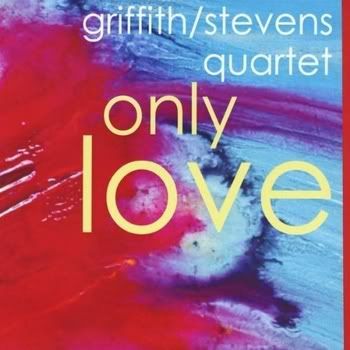
Griffith Stevens Quartet: When I First Met You
[purchase]
I once said that I would eventually find some male jazz singers, and I have two to finish this post. First up is Miles Griffith. Actually, the Griffith Stevens Quartet is a group, and the songs arise accordingly. Here, we are back to just drums, bass, piano and voice, but now they work differently than before. When I First Met You opens with just the bass, and soon becomes a bass and voice duet, before the full band finally joins in. The band establishes the groove loosely. Griffith sings elongated notes that have the effect of stretching the rhythm, creating dramatic tension. The whole thing seems to threaten to fall apart, but it never does. The lyric concerns those tentative steps into a new relationship, and the commitment is finally established at the end. Griffith’s voice sounds like it ought to be more limited than the others in this post, but he can make it do some remarkable things. Elsewhere on the album, there are songs where a measure of order emerges from chaos. Griffith always hits the notes he wants, and he is willing to walk a tightrope with the rhythm scheme. The band is right there with him, and the musical risks they take pay off far more often than not.
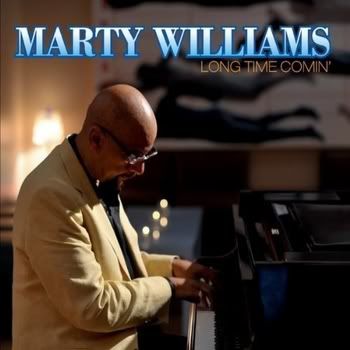
Marty Williams: Come Together
[purchase]
Marty Williams’ album Long Time Comin’ is a program of standards, many well known. Williams has a broad definition of “standards”; Come Together is the old Beatles song. Williams makes it a funky masterpiece, and he makes a musical connection to jazz by also including a version of Mercy Mercy Mercy on the album. The band is just drums, bass, and guitar, plus Williams at the piano. But the guitar part here is more like a horn part. To be honest, I’ve never been quite sure what this song is about, and I’m still not. But Wiiliams’ arrangement cooks, and his vocal brings out a bluesy quality I’ve never heard in the song before, and it really works. Most of the songs here get a more traditional treatment. But throughout the album, it is clear that Williams both loves and believes in his material. The album notes contain a moving dedication to his wife, and his performance of the love songs here always rings true and never sounds forced.






1 comments:
Thanks for listening to my friend Marty and appreciating his sound. This cd is getting a lot of radio play here in the Bay Area. Very gratifying. Their rainy Sunday afternoon at the No Name Bar in Sausalito last week was perfection. Yayy Marty, Eric Swinderman, Ruth Davies and Ranselle Merritt.
Post a Comment